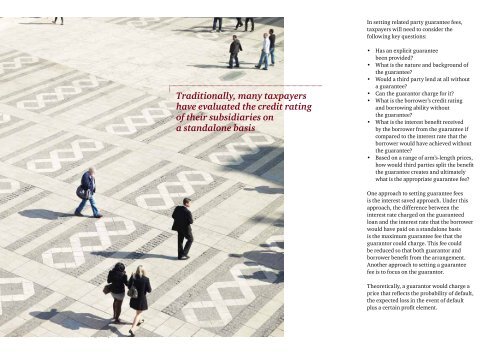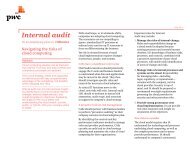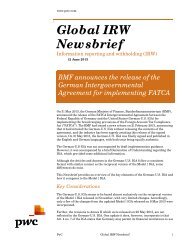Transfer pricing perspectives: Winds of Change - PwC
Transfer pricing perspectives: Winds of Change - PwC
Transfer pricing perspectives: Winds of Change - PwC
You also want an ePaper? Increase the reach of your titles
YUMPU automatically turns print PDFs into web optimized ePapers that Google loves.
In setting related party guarantee fees,taxpayers will need to consider thefollowing key questions:Traditionally, many taxpayershave evaluated the credit rating<strong>of</strong> their subsidiaries ona standalone basis• Has an explicit guaranteebeen provided?• What is the nature and background <strong>of</strong>the guarantee?• Would a third party lend at all withouta guarantee?• Can the guarantor charge for it?• What is the borrower’s credit ratingand borrowing ability withoutthe guarantee?• What is the interest benefit receivedby the borrower from the guarantee ifcompared to the interest rate that theborrower would have achieved withoutthe guarantee?• Based on a range <strong>of</strong> arm’s-length prices,how would third parties split the benefitthe guarantee creates and ultimatelywhat is the appropriate guarantee fee?One approach to setting guarantee feesis the interest saved approach. Under thisapproach, the difference between theinterest rate charged on the guaranteedloan and the interest rate that the borrowerwould have paid on a standalone basisis the maximum guarantee fee that theguarantor could charge. This fee couldbe reduced so that both guarantor andborrower benefit from the arrangement.Another approach to setting a guaranteefee is to focus on the guarantor.Theoretically, a guarantor would charge aprice that reflects the probability <strong>of</strong> default,the expected loss in the event <strong>of</strong> defaultplus a certain pr<strong>of</strong>it element.68 <strong>Transfer</strong> Pricing Perspectives. October 2011
















